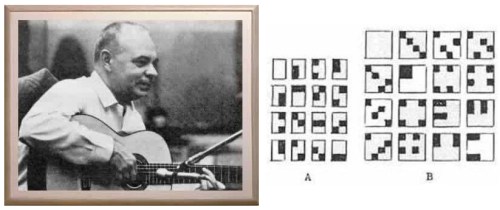Blame It on Trajan
Wikipedia on the 2008 film The Oxford Murders—

Christmas Eve image search
suggested by Stevens's phrase
"diamond globe."
(Larger version: 2 MB)
Blame It on Trajan
Wikipedia on the 2008 film The Oxford Murders—

Christmas Eve image search
suggested by Stevens's phrase
"diamond globe."
(Larger version: 2 MB)
… de la Iglesia
See Jan. 16-18, 2008, on poetry in Spanish
and the death of chess champion Bobby Fischer.
Note also yesterday evening's post and the date
Jan. 18, 2008, in the following Google search sidebar:
The film of The Oxford Murders was first released on Jan. 18,
2008, in Spain. Its premiere was in Madrid on the preceding day,
which was also the day of Bobby Fischer's death.
Backstory: The two previous Log24 posts
Raiders of the Lost Aleph (May 14) and
The Crying of Bucharest (May 15).
The following sequence of images was suggested by
Peter Woit's May 16 post "One Ring to Rule Them All."
Also from Devil's Night 2008:
From the May 16 Nobel Symposium talk discussed in
Woit's "One Ring to Rule Them All":



Related material:
All Souls' Day at the Still Point (Nov. 2, 2003) and
Frodo and the Oxford Murders (Oct. 13, 2011).
A quote from The Oxford Murders ,
a novel by Guillermo Martinez—
"Anyone can follow the path once it’s been marked out.
But there is of course an earlier moment of illumination,
what you called the knight’s move. Only a few people,
sometimes only one person in many centuries,
manage to see the correct first step in the darkness.”
“A good try,” said Seldom.
Click logos for related persons.
Background from this journal—
Collegiality, That Hideous Strength , and The Oxford Murders .
See also…
"The heart of the book is the conveying of a meaningful understanding
of where mathematical results originated…."
In memory of "Mr. Piano" Roger Williams, who died today—



Related material— A quote from The Oxford Murders ,
a novel by Guillermo Martinez—
"Anyone can follow the path once it’s been marked out.
But there is of course an earlier moment of illumination,
what you called the knight’s move. Only a few people,
sometimes only one person in many centuries,
manage to see the correct first step in the darkness.”
“A good try,” said Seldom.
Post 2310 in yesterday evening’s Short Story links to two posts
from 2006 inspired by Oxford mathematician Marcus du Sautoy—
|
Thursday, May 25, 2006
|
The first paragraph of
“Zeta Functions of Groups: The Quest for Order
Versus the Flight from Ennui,” by Marcus du Sautoy,
Mathematical Institute, University of Oxford—
“Mathematics is about the search for patterns,
to see order where others see chaos. We are very lucky
to find ourselves studying a subject which is neither so rigid
that the patterns are easy, yet not too complicated
lest our brains fail to master its complexities.
John Cawelti sums up this interplay perfectly in a book*
not about mathematics but about mystery and romance:
‘if we seek order and security, the result is likely to be
boredom and sameness. But rejecting order for the sake
of change and novelty brings danger and uncertainty…
the history of culture can be interpreted as a dynamic
tension between these two basic impulses…
between the quest for order and the flight from ennui.”’
* John G. Cawelti, Adventure, Mystery, and Romance:
Formula Stories as Art and Popular Culture ,
University of Chicago Press, 1976.
[Cawelti cites as his souce on interpreting “the history
of culture” Harry Berger, Jr., “Naive Consciousness and
Culture Change: An Essay in Historical Structuralism,”
Bulletin of the Midwest Modern Language Association ,
Vol. 6, No. 1 (Spring 1973): page 35.]
Here du Sautoy paints mathematicians as seekers of order,
apparently not realizing that the author he approvingly quotes
states that seekers of order face the danger of boredom.
Another danger to seekers
of order is, of course, seeing
order where there is none.
From Rebecca Goldstein's Talks and Appearances page—
• "36 (Bad) Arguments for the Existence of God,"
Annual Meeting of the Freedom from Religion Foundation,
Marriot, Hartford, CT, Oct 7 [2011], 7 PM
From Wallace Stevens—
"Reality is the beginning not the end,
Naked Alpha, not the hierophant Omega,
of dense investiture, with luminous vassals."
— “An Ordinary Evening in New Haven” VI
For those who prefer greater depth on Yom Kippur, yesterday's cinematic link suggests…
"Yo sé de un laberinto griego que es una línea única, recta."
—Borges, "La Muerte y la Brújula " ("Death and the Compass")
See also Alpha and Omega (Sept. 18, 2011) and some context from 1931.
For Yom Kippur


4. Image— Argument for the Existence of Rebecca
Some literary and cinematic background—

"Are you the butterfly… ?"
Powered by WordPress